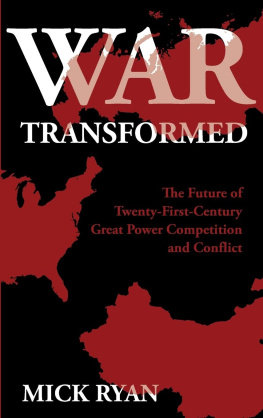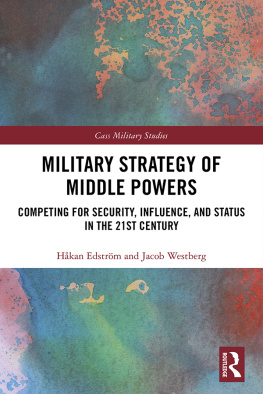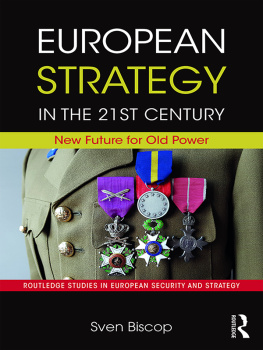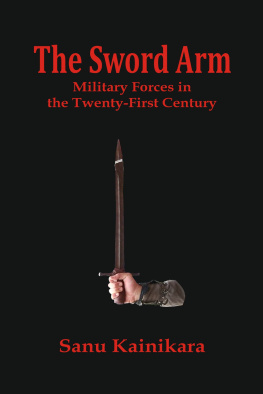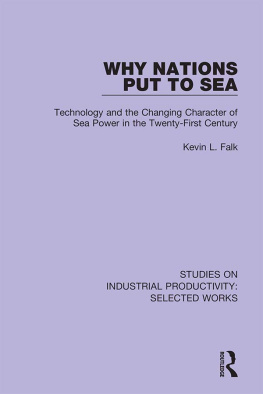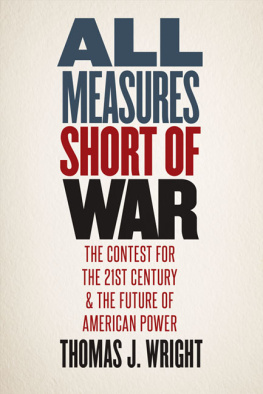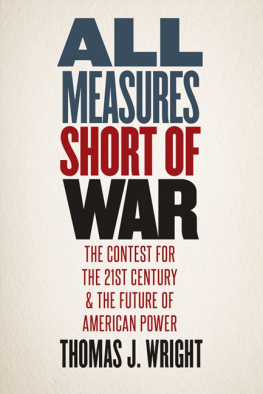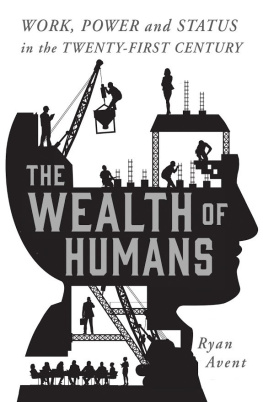WAR
TRANSFORMED
The Future of Twenty-First-Century
Great Power Competition and Conflict
MICK RYAN
Naval Institute Press
Annapolis, Maryland
Naval Institute Press
291 Wood Road
Annapolis, MD 21402
2022 by Mick Ryan
All rights reserved. No part of this book may be reproduced or utilized in any form or by any means, electronic or mechanical, including photocopying and recording, or by any information storage and retrieval system, without permission in writing from the publisher.
Library of Congress Cataloging-in-Publication Data
Names: Ryan, Mick, 1969 author.
Title: War transformed : the future of twenty-first-century great power competition and conflict / Mick Ryan.
Description: Annapolis, Maryland : Naval Institute Press, [2022] | Includes bibliographical references and index.
Identifiers: LCCN 2021034928 (print) | LCCN 2021034929 (ebook) | ISBN 9781682477410 (hardcover) | ISBN 9781682477427 (ebook)
Subjects: LCSH: WarForecasting. | Military art and science. | Strategy. | World politics21st century.
Classification: LCC U21.2 .R92 2022 (print) | LCC U21.2 (ebook) | DDC 355.02dc23
LC record available at https://lccn.loc.gov/2021034928
LC ebook record available at https://lccn.loc.gov/2021034929
Print editions meet the requirements of ANSI/NISO z39.48-1992 (Permanence of Paper).
Printed in the United States of America.
30 29 28 27 26 25 24 23 22 9 8 7 6 5 4 3 2
For the profession of arms
Contents
Tables
Acknowledgments
The story of this book did not begin when I put pen to paper (or fingers to keyboard) a couple of years ago. The true journey began in the late 1990s. After a succession of appointments as a combat engineer troop commander and engineer squadron second in command and a stint working operations in a joint headquarters, I found myself as the aide-de-camp of an Australian Army major general in our land headquarters in Sydney. I had not volunteered for the appointment and indeed had refused it several times. I had much to learn in those days.
It was a fortuitous appointment. I worked for a fantastic leader, Maj. Gen. Frank Hickling. A thoughtful commander and Vietnam veteran who understood how the world was changing, General Hickling reoriented our Armys focus from peacekeeping operations to land combat. He was eventually promoted and became our chief of army in mid-1998.
The time as aide-de-camp allowed me, for the first time, to see the bigger picture of an army as an institution. It reinforced my innate curiosity, and within a year I had published my first journal article. My selection to attend the U.S. Marine Corps Command and Staff College in 2001, followed by the School of Advanced Warfighting, supercharged my curiosity about our profession of arms and exposed me to new and exciting ideas about competition and conflict. It also allowed me to make a group of friends with whom I would serve in such places as Iraq, Afghanistan, and a cubicle in the basement of the Pentagon! We were the midranking officers of the post-9/11 generation, and many of us have remained in touchI suspect we always will.
Since that time, I have benefitted from having many fine mentors and commanders who have influenced my thinking, my leadership style, and my approach to my various appointments in the Australian Army and beyond. Academics such as Toni Erskine, Mike Evans, Anne-Marie Grisogono, Frank Hoffman, David Johnson, Rob Johnson, Therese Keane, Tom Mahnken, Cathy Moloney, Williamson Murray, Linda Robinson, and Brendan Sergeant have all been generous with their time at points over the last two decades. In particular, the influence, counsel, inspiration, and friendship of Eliot Cohen have been enormous, and I owe him a debt of gratitude that these words will never fully convey.
I have been the beneficiary of the leadership, lessons, and mentorship of many fine Army, Navy, and Air Force leaders in both Australia and the United States, among them (leaving aside ranks) Dave Allen, Robert Bateman, J. B. Blackburn, Ken Bullman, John Caligari, Angus Campbell, Steve Day, Anthony Fozzy Forrestier, James Goldrick, John Hartley, Frank Hickling, David Hurley, Mike Krause, Pete Mangan, Gus McLachlan, Craig Orme, and Roger Noble.
The professional military education ecosystem that has grown up online over the past two decades has been a great supporter of my writing, and I am enormously appreciative of the relationships with the editors and staff of websites and blogs such as Modern War Institute, War on the Rocks, Strategy Bridge, 3x5 Leadership, The Cove, and others. Nate Finney, Steve Leonard (also known as Doctrine Man), and Joe Byerly in particular have been wonderful collaborators, friends, and advisors.
Over the past four years, I have cherished my time in command at the Australian Defence College in Canberra. The students provide me with endless inspirationit is, after all, these students whom we seek to inspire and intellectually prepare for the coming fight. But the staff there are also absolutely first-classthey are one of the finest groups of military and civilian people with whom I have had the privilege to work. Every day, they are engaged in the crucial task of building the intellectual edge in our students to prepare them for the complex, changing, and challenging global security environment. In addition, I offer a very special shout-out to the team at our Australian Defence College libraryI could not have done this without you.
Thank you to Glenn Griffith and the team at Naval Institute Press. Glenn was generous and courageous enough to take a chance on a foreign military officer who wanted to write his first book. The journey with the Naval Institute Press team has been an absolute pleasure, and I have learned much.
The Australian Army and its amazing people have given me more than I can ever repay. I have been honored to have been a small part of this unique and wonderful national institution. Being a part of the army and wanting to see it successfuland its people well ledwere a significant impetus for writing this book.
Finally, through multiple operational tours, training exercises, work trips, house moves, overseas postings, absences on courses, and many other military demands, my daughters, Dana and Kara, and my wife, Jocelyn, have supported me. Jocelyn has carried the heaviest load through the majority of our marriage, has been the source of my best counsel, and is always my greatest cheerleader. This book and everything I have done over the last couple of decades would have been impossible without hermy best mate and the mother of our wonderful daughters.
This book may have taken two years to write, but it is a collection of what I have learned and observed over three and a half decades of soldiering in Australia, the Middle East, Southeast Asia, and the United States. As I approach the end of my military career, I trust that my legacy, in the form of this book, will be a useful contribution to the body of knowledge of our profession of arms.
INTRODUCTION
LADAKH, 15 JUNE 2020
Indian-controlled Ladakh and Chinese-controlled Aksai Chin lay opposite each other in the Himalayas. A line of control that neither India or China had ever agreed to roughly delineated their respective claims over the territory. For the Chinese, an agreement from November 1959 demarcated the line of control. For the Indians, a line of control agreed in September 1962 was the reference point.
Tensions in the Galwan Valley had been rising over the past several weeks. In May 2020 physical confrontations occurred between Indian and Peoples Liberation Army (PLA) troops near Pangong Lake. Both sides attributed the new unease to construction work on each side of the border to improve roads and airfields. Despite the tensions, several rounds of meetings had led to a deescalation of the situation between the two nuclear-armed powers and their respective border forces.

